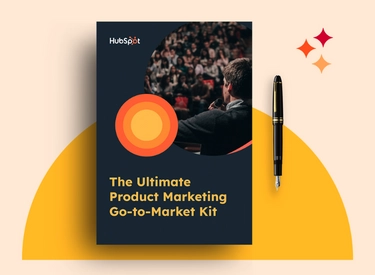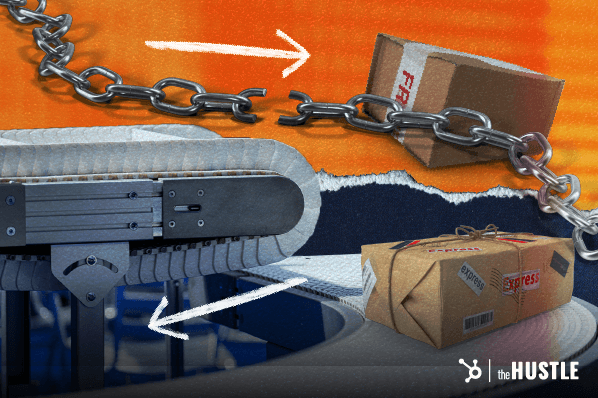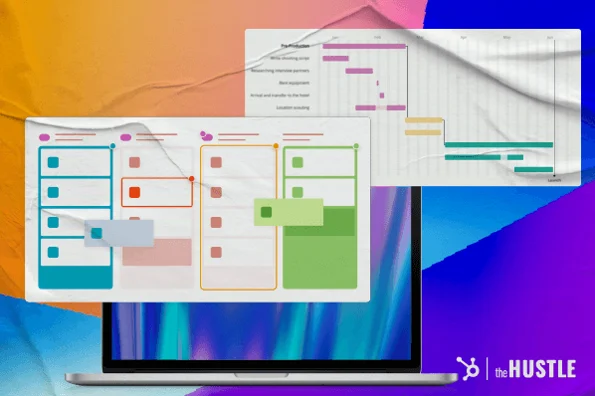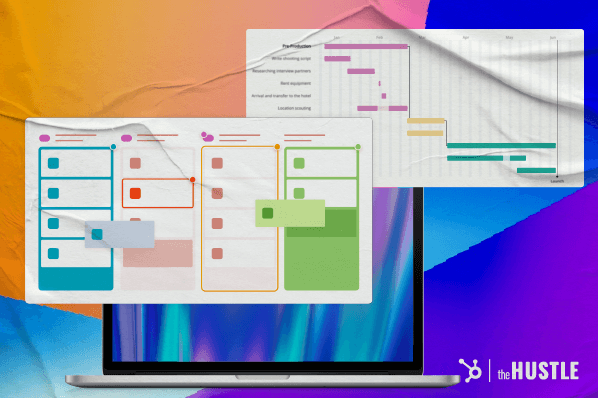Starting a business can be daunting, especially with so many options available in the marketplace. A key factor in standing out is creating a product that addresses a specific problem for your target audience — especially one that does it better or differently than the competition.

This is where product design comes in. Good product design can help you develop and deliver world-class products, fill a need in the market, and gain a deeper understanding of your target audience.
This guide explains a product designer’s role, the key phases of the design process, and common mistakes to avoid during that process.
Table of contents:
- What is product design?
- Why is product design important?
- What is a product designer’s role?
- Product design development process
- Common mistakes to avoid in product design
What is product design?
Product design refers to the processes a business undergoes as it develops a product or service. It involves conducting research, generating ideas, developing a product, and refining it through multiple iterations to ensure it meets the needs of its intended users. It’s based on design thinking, an iterative process that focuses on finding and building solutions.

Free Product Go-to-Market Kit
Free templates to ensure that your whole team is aligned for your next product launch.
- Product Launch Template
- Product Roadmap Template
- Sales Plan Template
- And more!
Download Free
All fields are required.

Why is product design important?
In addition to reducing costly changes down the line, embracing thoughtful product development from the get-go offers several advantages:
Increased competitive edge
Good product design can help differentiate you from the competition. By understanding what users want and addressing that with your product, you’re in a better position to outperform your competitors.
According to data collected by McKinsey, companies that were receptive to their customers’ desire for increased personalization generated 40% more revenue than those that weren’t.
Higher user satisfaction
Prioritizing user needs, preferences, and goals in the design process leads to satisfied and loyal customers, resulting in increased profits.
According to data from the same McKinsey report, 71% of consumers want a personalized experience when interacting with a brand, and 76% feel shortchanged when they don’t get it.
Better brand recognition
Consistently launching well-designed products can help you establish a distinct brand identity, making it easier for customers to recognize and remember your products. This can lead to long-term success and justify higher prices.
For instance, a Salsify report found that 46% of consumers would pay more for products from brands they trusted.
Just look at Apple; through thoughtful product design, the company has been able to not only build a product line that feels cohesive but also attract an enthusiastic following of fans along the way.
What is a product designer’s role?
The term product designer doesn’t just refer to a single role; it actually refers to a wide range of design jobs, including UI designers, visual designers, graphic designers, industrial designers, and UX designers. In a nutshell, product designers are those roles responsible for creating new products or improving existing ones.
The exact duties of a product designer vary from business to business and role to role. For example, product designers at HubSpot work closely with product managers and engineers to produce interactive experiences aimed at solving the needs of customers and businesses.
In contrast, the UX team at Google focuses on using machine learning to design smarter solutions for its customers. Interestingly, the team also doesn’t follow a hierarchical structure but is instead divided into various product areas, allowing peers to be present at all levels rather than just a few select senior individuals.
Often, a product designer will take into account details like user experience design, business goals, competitor products, manufacturing processes, and the product’s future direction. In addition, they should be fluent in usability testing, prototyping, ideation, user research, and information architecture.
“Designers must also be great project managers who can break down projects into smaller deliverables to ensure the final result has a lasting impact on users and the business,” notes Alex Muench, lead product designer at Doist, a productivity software company.
Product designers should have a wide skill set and must be comfortable with tools like computer-aided design (CAD) software, prototyping tools, project management apps, and, more recently, artificial intelligence (AI).
According to McKinsey’s The State of AI in 2023 report, 13% of product developers already use AI regularly in their work.
The average salary for a product designer is $81,740 per year.

Free Product Go-to-Market Kit
Free templates to ensure that your whole team is aligned for your next product launch.
- Product Launch Template
- Product Roadmap Template
- Sales Plan Template
- And more!
Download Free
All fields are required.

Product design development process
The product design process may differ across industries, but the fundamentals are the same. Below are the five key phases of the product design development process.
1. Defining the product vision
Before you think about designing a product, you and your team need to define your product vision. A great product vision will be like a compass, guiding everyone involved toward a common goal.
The vision should be clear, concise, and easy to understand. It shouldn’t be a detailed description of your product but rather a statement of your product’s purpose and direction.
It should address questions like:
- What problem does the product solve?
- Who is affected by this problem?
- What solutions are already available?
- What will make this product a success?
2. Performing product research
Once you’ve defined your product vision, the next step is to conduct research. This stage is essential in the product design process as it allows you to evaluate the product’s viability, understand user needs and pain points, and identify competitors.
To understand what the end user wants and why they would buy your product, you can talk to them via user interviews and online surveys.
Creating buyer personas is another great way to gain insights into what makes consumers tick. These are fictional profiles of your ideal customers based on market research. With these personas, you can focus your efforts on building a product that appeals to the right type of prospect (and at the moment in their journey).
With regard to the competition, be mindful of who your direct and indirect competitors are and how well they address user needs. Your goal should be identifying gaps in the market.
A few ways to identify competitors include using a tool like Google Trends or keeping track of online discussions through social listening. Social listening involves monitoring conversations related to your company, industry, and competitors on social media platforms.
Product research can also help you get buy-in from investors and stakeholders. One way to do this is by showing customer reviews you’ve collected from competitors’ websites and explaining how your product addresses the pain points raised in them.
3. Ideating a solution
During this phase, use a brainstorming session to generate a variety of ideas or solutions to the pain points you identified in step two.
Team members should have the freedom to come up with as many ideas as possible, no matter how outlandish they might appear. However, be sure to set a time limit to ensure that the session remains efficient and productive.
Once the brainstorming session is over, evaluate your ideas based on factors like user needs, budget, scalability, and available resources to ensure that the final idea is the most feasible one.
4. Creating prototypes
Now that you have an idea of what your product’s purpose is and how it fulfills that purpose, the next step is to create a product prototype.
This entails creating an early mock-up of your proposed design solution, also known as a minimum viable product (MVP) — the basic version of a product that allows you to evaluate its potential.
Many big-name brands started as MVPs, like Airbnb, Uber, and Dropbox.
The benefit of an MVP is that it includes just enough features for actual users to interact with it. As a result, you can gather feedback and identify potential flaws, allowing you to visualize the next step in your product’s iteration.
The process of prototyping can differ based on the type of product being developed. If you’re designing a digital product, you might create a wireframe or a sketch. If you’re making a physical product, you can outsource the prototyping process to a supplier or manufacturer.
5. Testing and iterating
Testing ensures the product functions as intended before it’s released to the public. Usability testing is one way to go about this. You can monitor how real users engage with the product and have them complete a task with it.
If you find that something about the product isn’t working, the design team may have to revisit earlier stages in the design process to correct the issue. Make any necessary adjustments and continue to test the product until you’re satisfied that it meets the target audience’s needs.
Once testing is complete, you should make preparations for the product’s release. If you’re trying to launch a product on a limited budget, consider using low-cost avenues of promotion like an email list, social media, or a Google Business account to start generating buzz.
It bears noting that iteration shouldn’t stop after the product hits the market. By continuously iterating it, you’ll help your product stay relevant and connected to your target audience.
A few ways to keep refining your product post-launch are measuring Customer Satisfaction Scores (CSAT), performing net promoter surveys, and monitoring customer feedback across social media channels.
Common mistakes to avoid in product design
Below are some of the most common mistakes to avoid in product design:
- Ignoring the manufacturing process: Finding a supplier who offers a fair price and meets your requirements can be difficult, which is why it’s vital to establish communication with manufacturers early on. Moreover, knowing how products are manufactured can influence your choices, which can lead to higher profits.
- Performing insufficient research: Developing a deep understanding of the end user is crucial for creating products that genuinely meet users' needs. Even with a shoestring budget, you can get the information you need by using things like questionnaires and publicly available marketing data. A Skynova survey found that 58% of startup founders would conduct more research before launching a new business if given a second chance.
- Setting vague objectives: To ensure the success of the design process, put a focus on specific key performance indicators (KPIs). Doing so allows you to identify potential bottlenecks in the design process sooner, facilitate data-driven decisions, and allocate resources more effectively. However, per a Design Systems survey, only 16% of respondents tracked metrics.
- Spending too much time on aesthetics: When designing a product, it’s important to consider both aesthetics and functionality. Prioritizing one over the other could lead to a product that doesn’t fully serve its intended purpose. For instance, if a smartphone is attractive but has glitches, it’s unlikely to succeed in the market.
- Failing to implement post-launch product iteration: Once you’ve launched your product, it’s crucial that you continuously refine and improve it to keep up with changing user needs and ensure its long-term viability.
Overall, successful product design involves a dedication to continuous improvement, monitoring shifts in consumer behavior, and maintaining an edge over your competition.
![→ Download Now: Free Product Marketing Kit [Free Templates]](https://no-cache.hubspot.com/cta/default/53/08b5e1f4-5d26-405b-b986-29c99bd0cb14.png)









